
Santo Spirito or the Holy Spirit is a spiritual complex in Florence, which includes a basilica with a sacristy and monasteries with courtyards and a refectory, which are an outstanding example of the early Renaissance with works by Michelangelo, Filippino Lippi, Sansovino, Orcagna, Giuliano da San Gallo and others.
The Basilica of Santo Spirito (Basilica of the Holy Spirit, Basilica di Santo Spirito) has the status of a minor basilica and is one of the main churches of Florence.
The Santo Spirito complex is located on the left (south) side of the Arno River, in the Oltrarno district of Florence, on the Piazza Santo Spirito square of the same name.
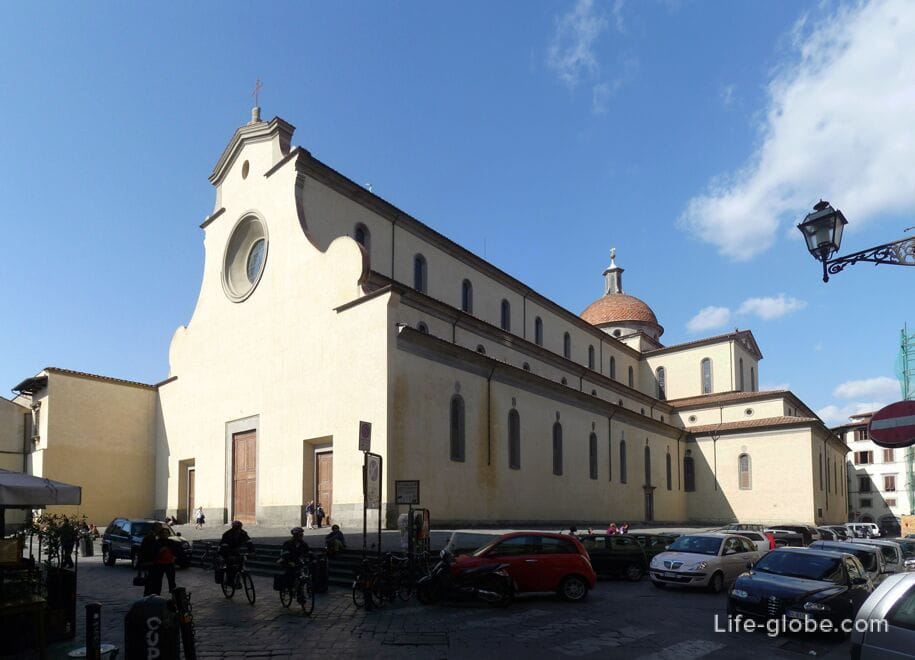
The complex traces its history back to the 1250s, when the land was donated to the Augustinian community. In 1252, the Augustinians founded a church and monastery, including the old church of San Romolo in the complex. Initially, the complex was dedicated to Mary, All Saints and the Holy Spirit; but after that the church became known only by the last of these dedications, the Holy Spirit or Santo Spirito. Subsequently, the complex grew, and a square was also created near the main entrance to the shrine.
The present church was built on the remains of a thirteenth-century Augustinian monastery destroyed by fire.
The construction was carried out according to the project of the Italian architect Filippo Brunelleschi. This was the last major work of an outstanding master. After Brunelleschi's death in 1446, the work continued under the supervision of three followers of the master, Antonio Manetti, Giovanni da Gaiole and Salvi d'Andrea. Salvi d'Andrea was also responsible for the construction of the dome, erected from 1479 to 1481 and the interior facade, created from 1483 to 1487.
The consecration of the basilica took place in 1481, but the final completion of construction falls on 1487. The sacristy, designed by the Italian architect Giuliano da Sangallo, dates back to 1489. The bell tower, which has a height of 70 meters, was built by Baccio d'Agnolo from 1503 to 1570. Also in the 16th century, the Italian court sculptor and architect Bartolomeo Ammannati developed an ambitious project for the reconstruction of the Augustinian complex, but only the second monastery was commissioned with the assistance of architect Alfonso Parigi the Elder. Subsequently, the complex underwent other interventions.
The exterior facade of the Basilica of the Holy Spirit looks unfinished, because it remained "naked" (with exposed stones) until the 18th century, after which it was plastered.

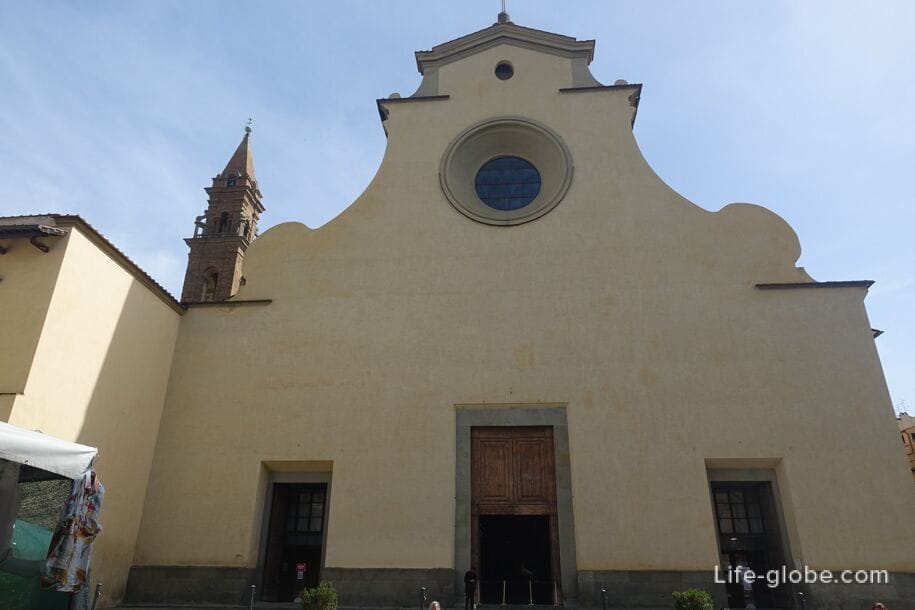
Interior of the Basilica of Santo Spirito
The exquisite interior of the basilica is divided into three naves by powerful columns with Corinthian capitals and pulvins, which support round arches and ribbed arches of the side naves.
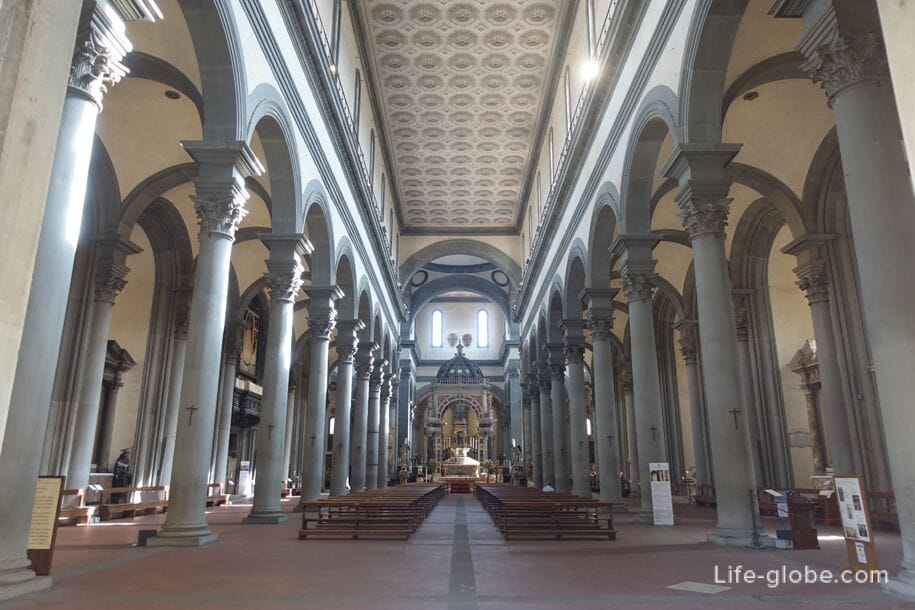
A fifteenth-century stained glass window depicting Pentecost, designed by the Italian artist Perugino, has been preserved on the inner facade.
There are numerous buildings in the church, in which there are a significant number of works of art created by famous artists and sculptors, including Bernardo di Stefano Rosselli, Neri di Bicci and Jacopo del Sellayo.
The most significant is the chapel of Bini Capponi (Bini-Capponi Chapel), which houses the painting "Santa Monica enthroned with Augustinian nuns" by Francesco Botticini (circa 1471) in the original frame. And in the chapel of Corbinelli (Cappella Corbinelli) stands out the altar of the Sacrament by Andrea Sansovino from 1490 to 1492.
Painting by Francesco BotticiniCorbinelli Chapel

In the chapels of the transept there are altarpieces by Filippino Lippi.

There is also a choir in the transept, from which the Frescobaldi marchionesses could participate in the rites without being noticed by the parishioners.
The main altar is decorated with a magnificent canopy (ciborium) with a carved Baroque dome made of polychrome marble, created by Giovanni Battista Caccini, Gherardo Silvani and Agostino Ubaldini between 1599 and 1607.
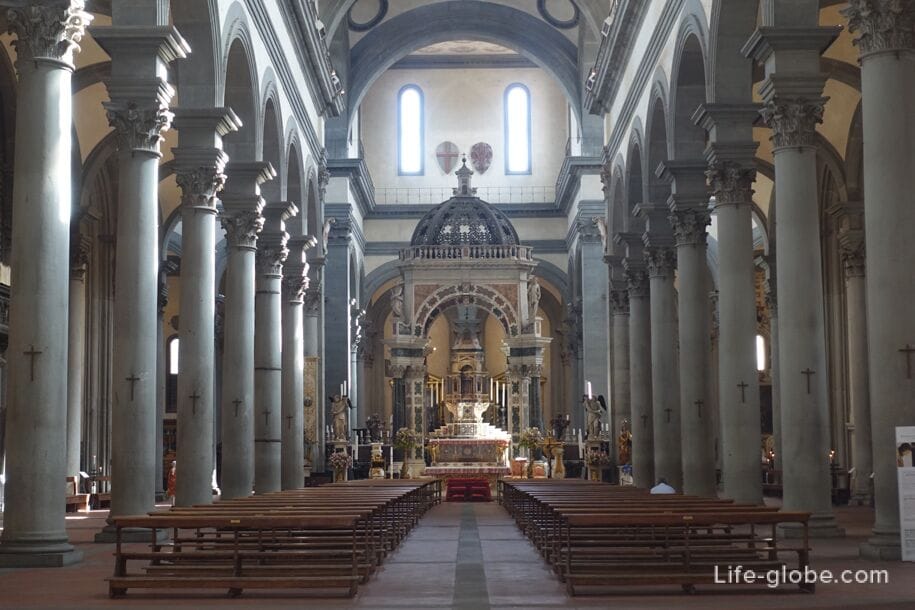

Some valuable works in the basilica, during the French occupation, were sent to France to the Napoleon Museum, and are now in the Louvre: Pala Barbadori, a painting by Fra Filippo Lippi; Jesus appearing to Magdalene, a painting by Angelo Bronzino; Golgotha of Christ, painted by Benedetto Ghirlandaio.
Particular attention is drawn to the octagonal sacristy with Corinthian pilasters, which houses a religious painting by the Italian artist Alessandro Allori (1596) "San Fiacre Healing the Sick", commissioned by Christina of Lorraine, wife of Ferdinando I of Medici.
The sacristy also houses the Coronation of the Virgin, attributed to Giovanni Maria Butteri, and, most importantly, there is also the Crucifixion of Santo Spirito, an early work of Michelangelo, which is a polychrome wooden sculpture and dates from about 1493.
Michelangelo Buonarroti, when he was seventeen years old (1492), was admitted to anatomical studies of corpses coming from the monastery hospital. Instead, he created a wooden crucifix, which is now in the sacristy.

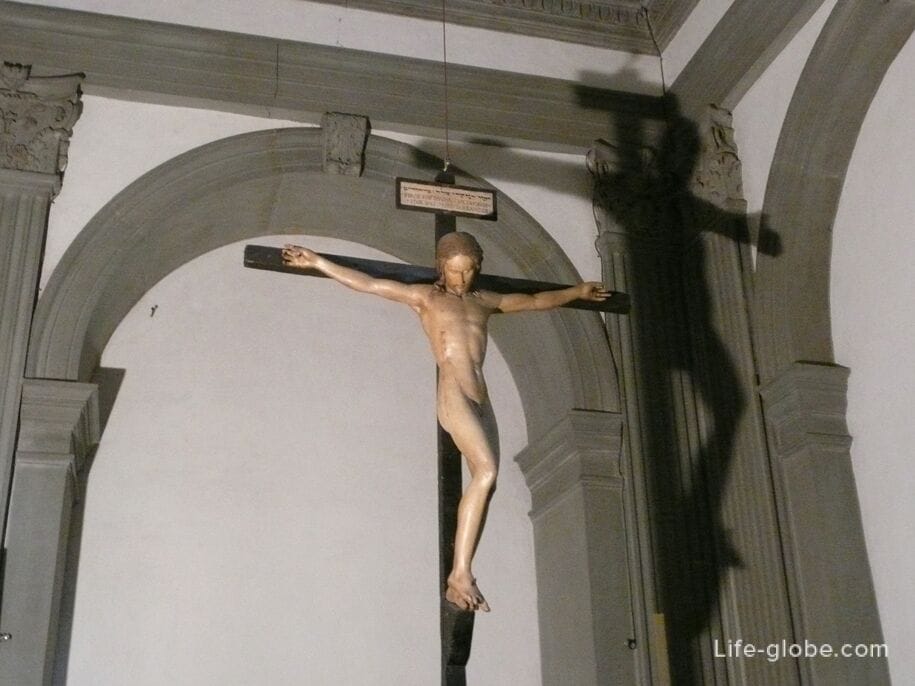
The complex also includes monasteries with courtyards.
Today you can visit the monastery and the large refectory (Cenacolo di Santo Spirito) with a fresco by Bernardino Pochchetti "Three Suppers" and with a special view of the two domes and the bell tower of Santo Spirito.

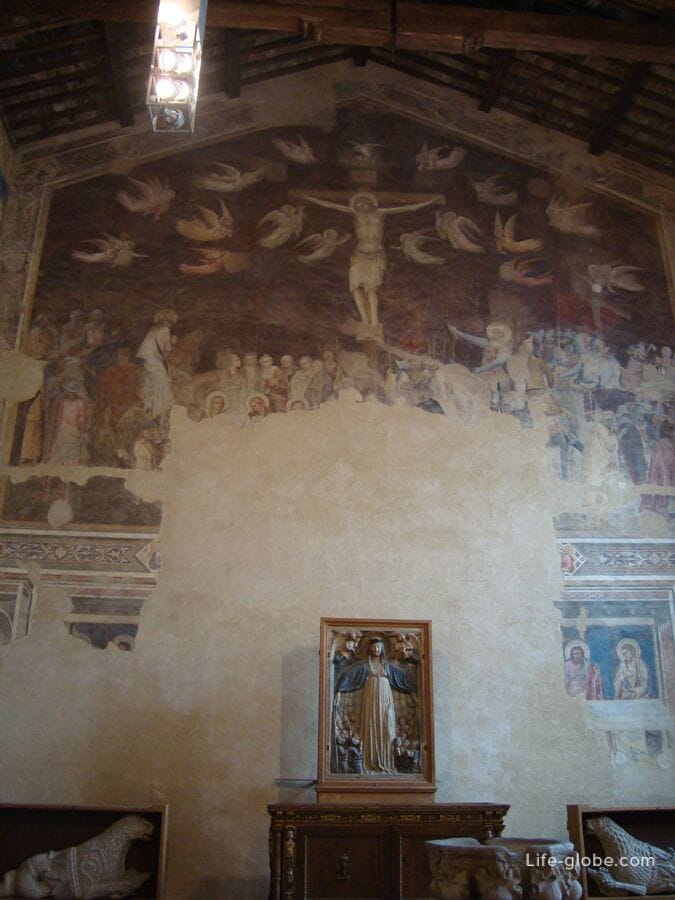
Entrance to the basilica is free.
The sacristy, monastery and refectory are included in the route of the complex "Augustinian Tour" and their visit is possible for a fee and at certain hours.
For information about the basilica and possible visits to other objects of the Santo Spirito complex, we recommend checking on the official website: basilicasantospirito.it.
The address of the Basilica of Santo Spirito: Piazza Santo Spirito, 30, 50125 Firenze FI, Italy.
Coordinates of the Basilica of Santo Spirito: 43°46'03.5"N 11°14'54.4"E (43.767639, 11.248436).
All accommodation facilities in Florence (hotels, apartments, guest houses, etc.), including in the historical center of the city and more remotely from it, can be viewed and booked here